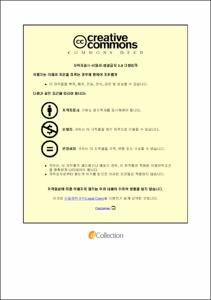Synthesis of TiO2:Eu3+ for improvement of CRI and light-extraction efficiency for WLEDs
- Alternative Title
- 백색 LED의 CRI 개선과 광 추출 효율 향상을 위한 TiO2:Eu3+의 합성
- Abstract
- Light emitting diodes (LEDs) with high-power and high efficiency are very important for diverse applications. In particular, their inherent characteristics such as small device capability and high radiance.
To evaluate the light-extraction efficiency and structural properties, firstly, titanium dioxide (TiO2) spheres were synthesized by means of solvothermal reaction method with different sintering temperatures. When the sintering temperature increased, the particle size of TiO2 spheres were increased.
When the sintering temperature used above 800 °C, the phase transition from anatase to rutile occurred. The UV-vis spectra of a rutile phase exhibited higher reflectance ratio than that of anatase phase. WLEDs was fabricated by encapsulating TiO2 spheres with commercial Y3Al5O12:Ce3+ (YAG:Ce3+) phosphors on blue LEDs. When the blue LED chip is encapsulated with a mixture of rutile TiO2 spheres and commercial YAG:Ce3+ phosphor, a pleasant WLED with a high intensity, CRI of 63 and CCT of 5109 K, is achieved.
Secondly, TiO2:0.01Eu3+ spheres were synthesized with different sintering temperatures. Since the sintering temperature increased, the particle size of TiO2:0.01Eu3+ spheres were also increased. When the sintering temperature increased above 1000 °C, the phase transition from anatase to rutile occurred. At 900 °C, Eu2Ti2O7 as an impurity phase also appeared. The photoluminescence spectra of TiO2:0.01Eu3+ spheres, for the intense red emission of 612.5 nm was observed under the excitation at 463.5 nm. The emission intensity decreased with increasing the sintering temperatures. Even over 1000 °Ϲ, a rutile phase, PL and PLE intensity almost negligible. The diffused reflectance spectra of rutile TiO2 exhibited higher than that of anatase TiO2. WLEDs were fabricated by encapsulating TiO2:0.01Eu3+ spheres with commercial YAG:Ce3+ phosphors on blue chips. When the blue LED chip is encapsulated with a combination TiO2:0.01Eu3+ spheres (sintered at 1100 °Ϲ) and commercial Y3Al5O12:Ce3+ phosphor. A pleasant WLED was achieved with a high intensity, CRI of 65 and CCT of 5477 K.
Finally, a series of Eu3+ doped TiO2 spheres were prepared by a solvothermal reaction method. The influence of Eu3+ ion concentration on the size and surface morphology of TiO2 spheres were examined by taking the scanning electron microscope and transmission electron microscope images. When the Eu3+ ion was introduced in an anatase phase, the intense red emission of 612.5 nm was observed under the excitation of 463.5 nm. The emission intensity increased with increasing the concentration of Eu3+ ion. Moreover, the diffused reflectance spectra of Eu3+ doped TiO2 spheres exhibited higher reflectivity by high concentration of Eu3+ ion. When the blue LED chip is encapsulated with a combination of 10 mol% Eu3+ doped TiO2 spheres and commercial YAG:Ce3+ phosphor, a pleasant WLED was realized with a high intensity, CRI of 62 and CCT of 4938 K,
The light-extraction efficiency of encapsulating TiO2 spheres improves about 55.2%, TiO2:Eu3+ spheres improves about 80% and 10 mol% Eu3+ doped TiO2 spheres let to improve about 60.9% higher than that of normal WLEDs.
- Issued Date
- 2017
- Awarded Date
- 2017. 2
- Type
- Dissertation
- Publisher
- 부경대학교 과학기술융합전문대학원
- Affiliation
- 부경대학교 과학기술융합전문대학원
- Department
- 과학기술융합전문대학원 LED융합공학전공
- Advisor
- 양현경
- Table Of Contents
- 1. Introduction 1
2. Theoretical backgrounds 4
2.1 Basic of LEDs 4
2.2 LED efficiency 5
2.3 The principle of the extraction 7
2.4 Light escape 9
2.5 High refractive indexed material of TiO2 13
2.6 Phosphor 19
2.6.1 Luminescent material 19
2.6.2 Luminescent mechanism 21
2.6.3 Phosphors based WLED 23
3. Experimental 26
3.1 Solvothermal reaction method 26
3.1.1 Synthesis of TiO2 sphere with different sintering temperatures 29
3.1.2 Synthesis of TiO2:0.01Eu3+ sphere with different sintering temperatures 29
3.1.3 Synthesis of TiO2:Eu3+ sphere with different concentration of Eu3+ion 31
3.2 Characterization 32
4. Result and discussion 38
4.1 TiO2 sphere with different sintering temperatures 38
4.2 TiO2:0.01Eu3+sphere with different sintering temperatures 47
4.3 TiO2:Eu3+ sphere with different concentration of Eu3+ion 56
5. Conclusion 66
References 69
- Degree
- Master
- Appears in Collections:
- 과학기술융합전문대학원 > LED융합공학전공
- Files in This Item:
-
-
Download
 Synthesis of TiO2:Eu3+ for improvement of CRI and light-extraction efficiency for WLEDs.pdf
기타 데이터 / 3.42 MB / Adobe PDF
Synthesis of TiO2:Eu3+ for improvement of CRI and light-extraction efficiency for WLEDs.pdf
기타 데이터 / 3.42 MB / Adobe PDF
-
Items in Repository are protected by copyright, with all rights reserved, unless otherwise indicated.